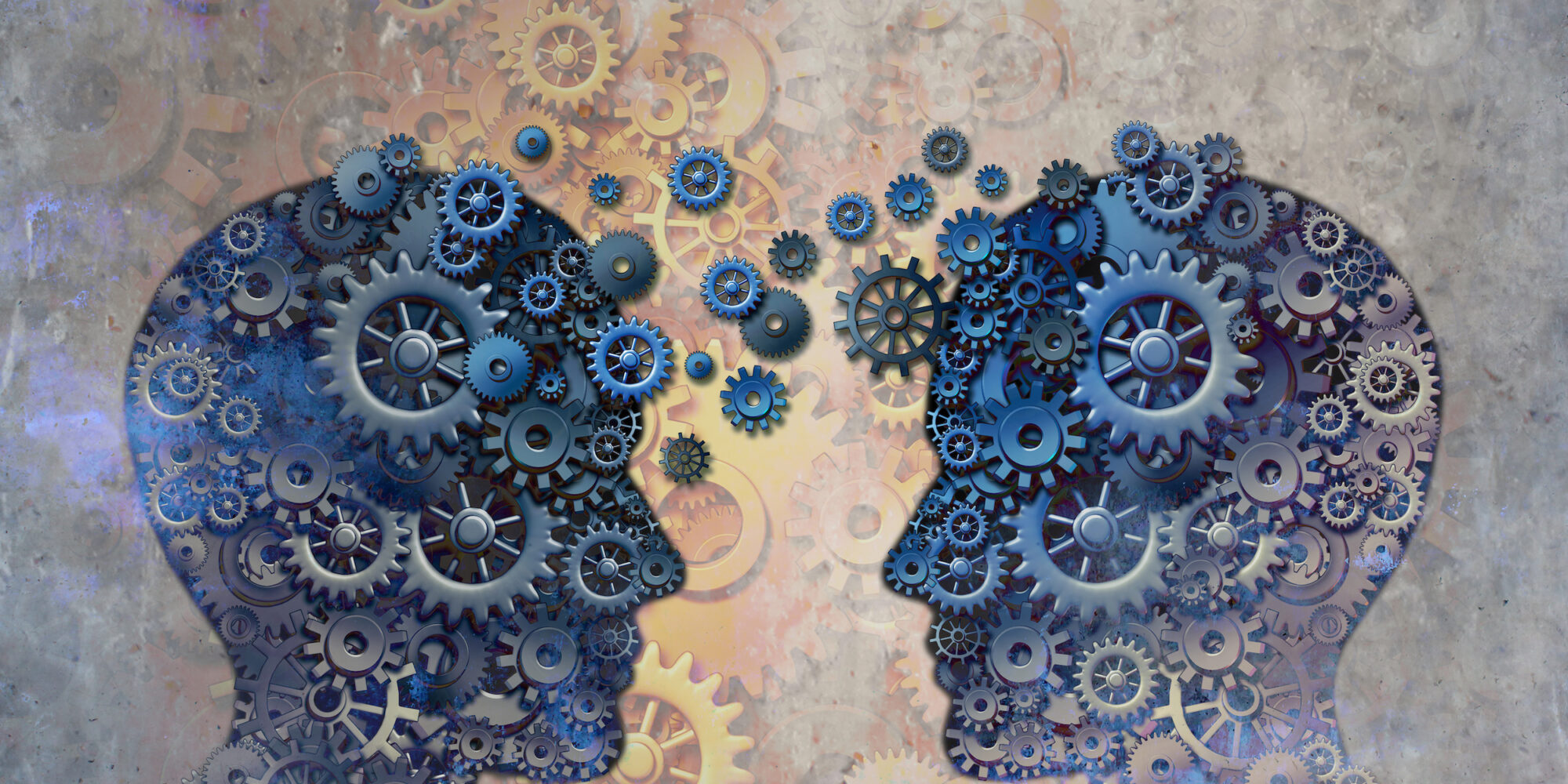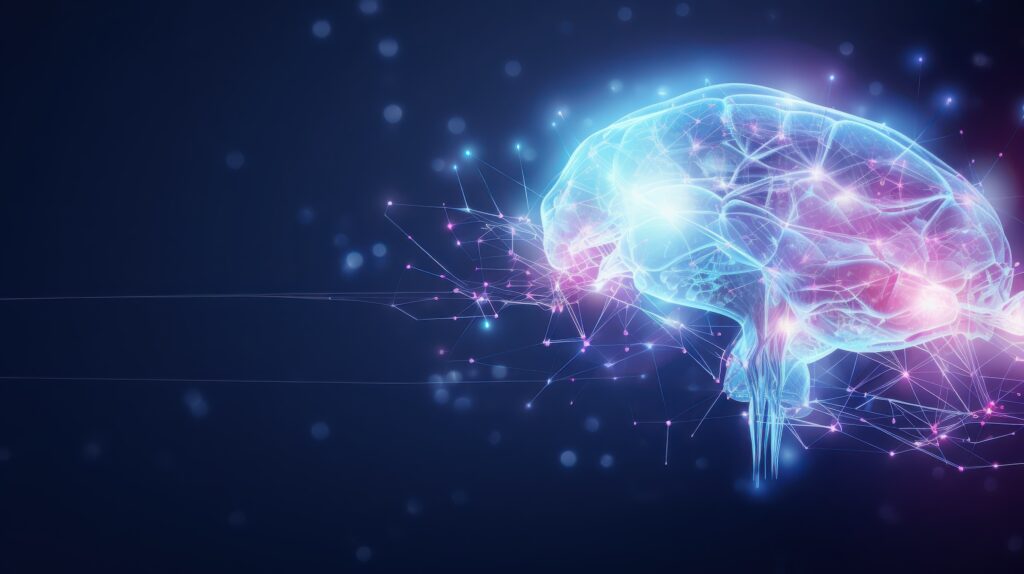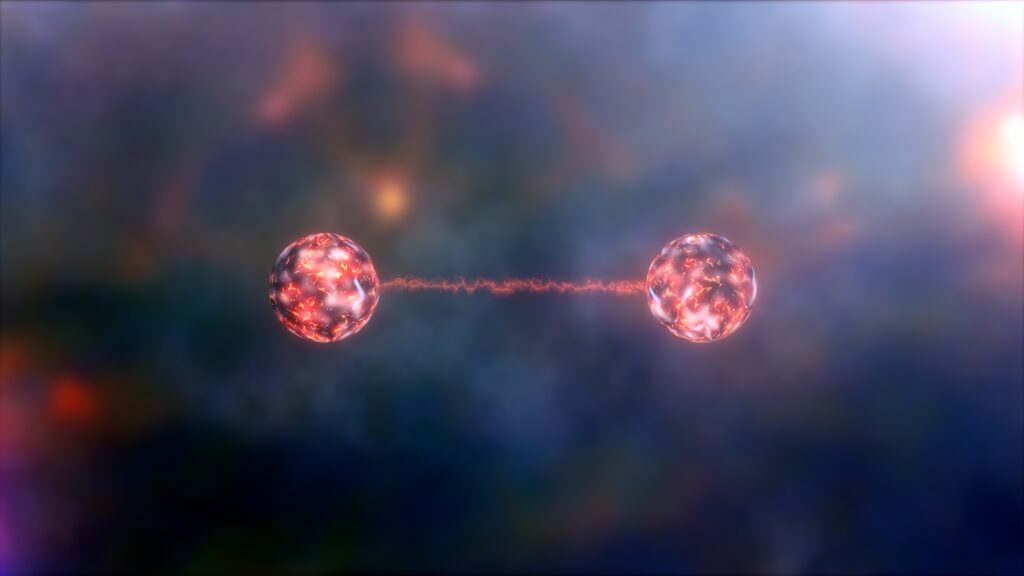Meta-survival: on the incoherence of localized, countable subjectivity
Reading | Metaphysics
![]() Ola Nilsson, MA | 2024-03-17
Ola Nilsson, MA | 2024-03-17

Through a careful series of thought-experiments, and starting from mainstream assumptions regarding the relationship between mind and brain, Ola Nilsson shows that the notion of multiple, individual, local subjects of experience is incoherent. Consciousness, therefore, cannot fundamentally be a localized, countable process.
Introduction
Starting from a raw materialist worldview, this essay will take you to the border of something completely different. I use the term ‘self-experience’ as a collective term for everything that seems to make you who you are. This includes your consciousness, your personal identity, and other related features. Initially, I will adopt the stance that the brain plays a crucial role in self-experience, and that self-experience is a kind of process that arises from within a specific brain.
Two brains, one mind
Imagine that an arbitrarily small part of your brain is replaced with a tiny artificial device that maintains the same causality and function as the replaced biological part. It would then be difficult to claim that anything is lacking in your self-experience if, after the exchange, you moved, spoke, thought, and behaved as before. We could further imagine that all remaining parts of your brain are successively replaced with similar devices that maintain causality and function with the rest of the brain. In this scenario, your self-experience would have been transferred from a biological brain to what one might call an ‘artificial brain.’ After this exchange, parts of the artificial brain could be replaced with new units that maintain the causality and function in the artificial brain. The units that were left over in this process could be assembled into another brain, which would correspond to the first artificial brain in the example.
Thereafter, the two artificial brains could be fed the same stimuli through electrodes connected to the places where the nerve fibers would normally have connected to the sensory organs. In this scenario, everything that one brain experiences would also be experienced by the other brain. Even though the brains are qualitatively identical, it is not as apparent that the self-experience of the brains is numerically distinct. Consider, for instance, if one unit from one artificial brain were exchanged with a unit from the other artificial brain; would the two brains then immediately lose their self-experience? Not if one believes what was mentioned above: that if the causality and function are maintained in the brain, there is no reason to believe that this brain’s self-experience would disappear.
If all units are exchanged between the two artificial brains, will the self-experience also switch places? What happens if, instead, half of the units are exchanged? Would such an exchange mean that the self-experience becomes evenly distributed between the two brains, i.e., with fifty percent in each brain?
Perhaps the answers to the questions above are not as intricate as they may initially seem. If one believes that a unit can be exchanged without affecting the self-experience, then there is no good reason to believe that the self-experience would disappear if more than one, or even all units, are successively exchanged. If it is irrelevant for the two artificial brains which specific units constitute the brain, then this should mean that the self-experience is not only qualitatively, but also numerically the same across the two artificial brains. This, in turn, means that, for a certain specific self-experience, it does not matter if there are thousands, or just one such artificial brain as described above [2]. These artificial brains are thus in ‘contact’ with the same self-experience. This means that you ultimately cannot be found in your brain.
So, if locality or specific matter is not fundamental for the self-experience, what about time? If we simulated the experience of eating a red apple in one of the brains, and then immediately stopped all processes in the brain for an arbitrary period, and then restarted them, would this brain have perceived this time gap? Since the gap is not registered in the brain, the length of this gap should be irrelevant. The specific self-experience would therefore perceive the eating of the apple as a continuous event, without interruption. One can further imagine a scenario where the simulated apple-eating process is looped, and where the brain’s causal pattern is reset to the initial state after each time the apple is eaten. For every new initiation of the process, the self-experience would interpret the event as unique, asserting that the eating of the apple is happening here and now for the very first time. This demonstrates that, regardless of whether there is a large time gap between two self-experienced events or if the self-experienced event is repeated after being reset to the initial state, the event would always be experienced as occurring here and now for the first time.
The specific self-experience thus appears not to be dependent on a particular set of matter or a spatiotemporal location. This self-experience would therefore remain numerically identical in all repeated instances, regardless of where and when it is instantiated. The instances all have an objective nature and history, but the subjective quality of the instances is something abstract, separate from all ‘objective’ contexts. If one accepts the outcomes of this thought experiment, it implies that a person can fundamentally be seen as an abstract object [3].
However, there is a ‘but’ to consider in this thought experiment. Normally, two cars would not be regarded as the same car, no matter how many parts were exchanged between them; They would still be two different cars. It’s conceivable that two exactly alike self-experiences could be numerically distinct, just as two exactly alike brains can be. The fact that we have ‘puzzled’ around with the parts of the two artificial brains does not necessarily mean that we have shown that the self-experience housed by both brains constitutes the same numerically identical self-experience. Perhaps the swapping between the brains only leads to the preservation of two numerically distinct self-experiences. This stance on self-experience, however, soon encounters difficulties. For what are we really referring to when we describe two brains?
The Identity of Indiscernibles
What distinguishes one object from being two objects? Two qualitatively identical books may be alike, but it’s clear that they are two copies of a book: one copy lies on the table in front of you, while the other is found in the bookshelf. These books do not constitute the same book, for if they did, the books, or rather the book, would be numerically identical, that is, identical with itself [4].
However, there are reasons to question whether these seemingly correct answers are valid under all conceivable scenarios. The “Principle of Identity of Indiscernibles,” hereinafter abbreviated as “PII,” is the metaphysical principle that stipulates that there cannot be two (or more) objects that share all properties [5]. An equivalent description of PII is that objects that are indistinguishable in every respect constitute the same object [6].
In the influential paper “The Identity of Indiscernibles,” British-American philosopher Max Black presents a thought experiment based on a radially symmetric universe. According to Black’s definition, a “radially symmetric universe” is a small universe with a center, where everything that exists and occurs at one place in the universe also exists and occurs at the diametrically opposite place in the universe. In such a universe, your right-handed qualitatively identical ‘twin’ will also be right-handed. An object set in motion on one side of the universe will have a ‘twin object’ simultaneously set in motion on the opposite side; a change in one object leads to the exact same simultaneous change in the other twin object.
Black asks the reader to imagine a radially symmetric universe where only two qualitatively identical spheres of chemically pure iron exist. These two spheres share the same qualitative and relational properties; what applies to one sphere also applies to the other, without exception. Black argues that PII is an obviously false principle, since a universe where only two exactly alike spheres exist, seems to be a possible universe [7]. However, I think Black is wrong about PII.
Another interpretation of PII
If one categorically claims that a sphere is a sphere and an apple is an apple, these objects are attributed properties they don’t necessarily possess. Consider the fruit described as an apple. Even though it looks like an apple, smells like an apple, and should be classified as an apple, it’s highly unclear if this object corresponds to a kind of Platonic form in a Platonic world of ideas, where objects such as spheres and apples are categorized. Indeed, there are significant advantages in our daily lives to categorizing and describing objects as spheres and apples, but it’s another question what metaphysical significance this categorization of objects holds. For example, we can name ‘two’ rivers differently, even though the rivers are interconnected. Then, these rivers can flow together into something we call ‘one’ lake. The lake can then connect to something we call ‘one’ sea. But can the boundaries of these various supposed water collections be attributed with metaphysical significance? [8] If not, shouldn’t the same apply to spheres? If one considers these supposed object configurations of rivers or spheres as independent and ‘cataloged’ entities, then there might be a reason to claim that Black’s two spheres refute PII, as one can then talk about rivers and spheres in plural, and PII can thereafter be judged as a trivially false principle. But one can also choose not to view these object configurations as independent entities. Instead, one can see the whole collection of water, or Black’s two spheres, as a unit, rather than a jumble of rivers or spheres.
That we divide the scenario into two spheres is a choice we make in agreement with Black. One could just as well (albeit somewhat impractically) consider the scenario as one, involving a single object resembling two distinct spheres. Black’s spheres can be seen as a scenario involving a loosely assembled object. If another such loosely assembled object was added to Black’s universe, the scenario would necessarily become different compared to before. In this sense, the number of supposed rivers or spheres seems to lack metaphysical significance, regardless of whether they are claimed to be two, four, or thousand in number. The metaphysical significance is not determined by the alleged number of objects; the scenario is what it is.
Imagine Black’s universe with its ‘two’ qualitatively identical spheres. Now replace the spheres with ‘two’ qualitatively identical persons, face to face, five meters apart. These ‘two’ persons are positioned so that they share all relational properties with each other. Then, imagine that ‘one’ of these ‘two’ persons is instantaneously annihilated. The question is: which one has been annihilated? I believe that no person has been annihilated, and that no loss of a person has occurred. But, of course, the scenario has now changed. What took place before the annihilation was not two persons staring at each other, but rather a person looking at himself, just because ‘they’ constituted the same person (remember the earlier thought experiment with the two brains). This statement is supported also by the concept known as “indistinguishable particles” in modern physics. This means that if a complete particle exchange had occurred (counterfactually) between the two persons, the scenario would remain unchanged [9].
If it doesn’t matter which particles constitute a certain scenario, there is no reason to assume that the scenario involves two different persons. If the particles were reorganized between the ‘two’ persons, the scenario would still be the same. Nevertheless, with the annihilation the scenario has changed in both a physically and metaphysically significant way. The scenario after the annihilation is numerically identical to what follows, regardless of which of the ‘two’ persons was annihilated. From having been in a situation where the person saw himself, he is now in an empty universe. If it was instead the ‘other’ person who was annihilated, the following scenario would still be numerically identical to the ‘first’ described outcome. Thus, it is not two different scenarios that have been described, but the very same one.
Why we seem to survive annihilation after divergence
Imagine a duplicator device that creates a perfect copy of a person. The place where the copy appears is only a few meters away from where the original person is located. This duplicator also compensates for external relational properties such as the persons’ different distances to objects. This is done by modifying the surrounding environment around the persons during the duplication process itself. If we accept that the same numerical self-experience can occur in two distinct but qualitatively identical brains, this will mean that the self-experiences of these two persons after the duplication will constitute the same numerically identical self-experience. In a scenario where this duplicator is used, the arisen ‘copy’ will experience that she is the original person. Since the original and the ‘copy’ share the same numerical self-experience, and both are aware of the situation they are in, they realize that there is no reason to try to make a distinction between each other.
However, the notion of two persons sharing the same numerical self-experience only applies as long as neither of them diverges from the shared state in which they share all properties with each other. If they diverge from this state, perhaps by one of them scratching their nose with the right hand, while the other does it with the left, it can be argued that two different self-experiences arise. This is because, with such an event, each person starts to develop their own unique experiences that are unknown to the other person.
If one of the two persons were to be instantly annihilated while they are in the shared state, no person would die, since they are essentially the same person. But, if one of them is annihilated after they have begun to diverge from each other, the annihilated person seems to die. Or do they?
We can imagine that a person (Person A) steps into the duplicator device, and that her copy (Person B) comes into existence. But soon after, they diverge from the shared state as they go out into the world and start to develop their own experiences. Ten minutes later, Person A is told that she will be annihilated. However, Person A is offered an alternative to annihilation: the duplicator has an additional feature; it can not only copy, but also modify its user. If Person A wishes, she can step into the duplicator together with Person B, and be modified to the exact same state Person B is in. This modification would thus lead to a new shared state where Person A and Person B would share the same numerically identical self-experience. Person A is assured that the whole process can be carried out in a conscious state—why wouldn’t it be possible?—and that the whole thing will be over in a couple of minutes. Of course, Person A will lose the experiences and memories she has built up from the first shared state, which she and Person B were in together ten minutes ago. But she will not be annihilated. The offer sounds promising to Person A. She therefore heads to the duplicator, to which Person B has already arrived.
It is not uncommon for people to experience memory loss, nor is it unusual for rapid bodily changes to occur due to, for example, an accident. We would not claim that a person who has experienced a memory gap, or has sustained an injury, is not the same person as before. Similarly, it seems that only minor modifications are needed for Person A to match Person B’s state: a few memories need to be modified, and some minor bodily changes will also need to be made. The environment needs to be adjusted as well, ensuring it is identical for both Person A and Person B. Once these adjustments are made, they would once again share a state in which they have the same numerically identical self-experience.
Imagine that, instead of undergoing the modification process, Person A was annihilated and, thereafter, Person B underwent the duplication. The outcome would then be the same as if Person A had undergone the modification process because the numerically identical self-experience—in both scenarios—would have its origin in Person B. But in what way does it help the annihilated Person A, if Person B undergoes a duplication after the annihilation?
Imagine a scenario where Person A is faced with a task that requires two persons. She needs to pick a certain quantity of blueberries within a specific timeframe but realizes she cannot complete the task alone. Therefore, Person A goes to duplicator and creates a copy of himself. Afterward, the two persons leave the duplicator, diverge from the shared state, and complete the task of picking blueberries. After that, they are supposed to ‘reunite’ into a new shared state through the modification process. The lot to undergo the modification falls on Person A. However, instead of reuniting to a shared state through modification, there is another device which can immediately annihilate Person A. The question is whether there are any reasons for person A, in this scenario, to not use the annihilation device?
Conclusion
If one cannot provide a valid reason why an immediate annihilation of Person A would be a worse option than the modification process, which is carried out in a conscious state, one cannot credibly claim that person A would not survive through person B upon annihilation, even after Person A and B have diverged from each other, as in the case with the blueberry picking. That person A seems to survive trough person B could be summed up by the term ‘meta-survival.’
Bibliography
[1] Zuboff, Arnold. “One self: The logic of experience.” Inquiry 33.1 (1990): 39-68.
[2] Zuboff, Arnold. “Moment universals and personal identity.” Proceedings of the Aristotelian Society. Vol. 78. Aristotelian Society, Wiley, 1977
[3] Noonan, Harold and Ben Curtis. “Identity”, The Stanford Encyclopedia of Philosophy (Fall 2022 Edition), Edward N. Zalta & Uri Nodelman (eds.), URL = <https://plato.stanford.edu/archives/fall2022/entries/identity/>.
[4] Forrest, Peter. “The Identity of Indiscernibles”, The Stanford Encyclopedia of Philosophy (Winter 2020 Edition), Edward N. Zalta (ed.), URL = https://plato.stanford.edu/archives/win2020/entries/identity-indiscernible/
[5] Wörner, David. “On making a difference: towards a minimally non-trivial version of the identity of indiscernibles.” Philosophical Studies 178.12 (2021): 4261-4278.
[6] Black, Max. “The identity of indiscernibles.” Mind 61.242 (1952): 153-164.
[7] Kolak, Daniel. I am you: The metaphysical foundations for global ethics. Vol. 325. Springer Science & Business Media, 2007.
[8] French, Steven. “Identity and Individuality in Quantum Theory”, The Stanford Encyclopedia of Philosophy (Winter 2019 Edition), Edward N. Zalta (ed.), URL = <https://plato.stanford.edu/archives/win2019/entries/qt-idind/>

Essentia Foundation communicates, in an accessible but rigorous manner, the latest results in science and philosophy that point to the mental nature of reality. We are committed to strict, academic-level curation of the material we publish.
Recently published
Reading
Essays
Seeing
Videos
Let us build the future of our culture together
Essentia Foundation is a registered non-profit committed to making its content as accessible as possible. Therefore, we depend on contributions from people like you to continue to do our work. There are many ways to contribute.















